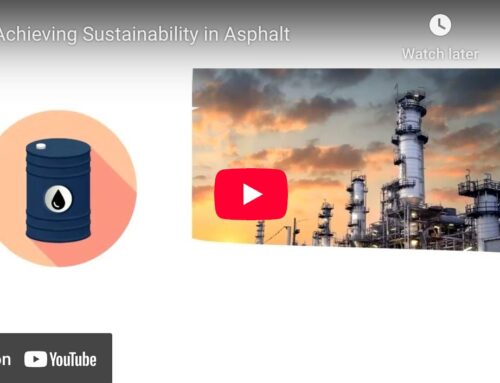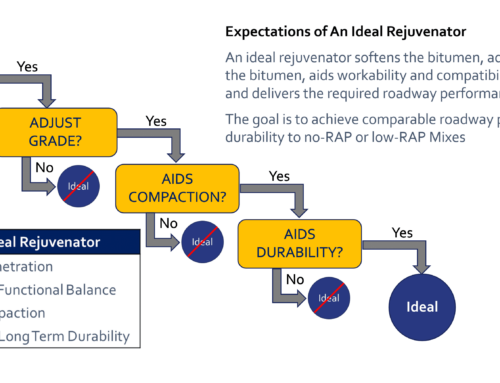TRANSCRIPT FROM VIDEO:
When using Reclaimed Asphalt Pavement in mixes was first introduced, the common belief was that the only modification needed was to soften the binder before adding RAP to a mix. However, research has demonstrated that while viscosity is an important property to consider, additional functional characteristics need to be restored for the resulting roadway to meet specifications.
Modern understanding of RAP use in mixes accounts for the need for a recycling agent, or rejuvenator, to be added in order to rebalance the mix, restore the aged bitumen’s essential properties, and provide long-term durability to the roadway. This is particularly important as high-RAP mixes have become more mainstream, often requiring the use of a rejuvenator to allow for more than 25% RAP in a mix.
Rejuvenators have also evolved in response to demand for higher performing roadways built with RAP mixes. While some recycling agents are made from petroleum-based materials ranging including REOBs, a new class of rejuvenators has come to market with environmentally friendly options. On-purpose manufactured blends made from bio-based oils typically offer superior, performance metrics.
Not all rejuvenators are created equally, with different options offering different properties, dosage efficiencies, and cost effectiveness. These factors should not be overlooked when creating a balanced mix design.





